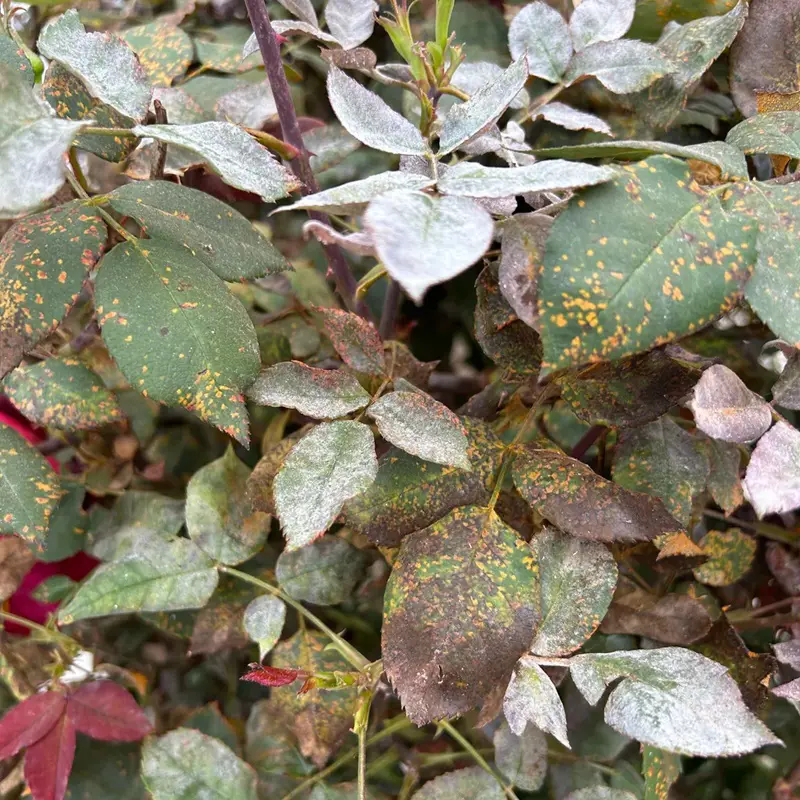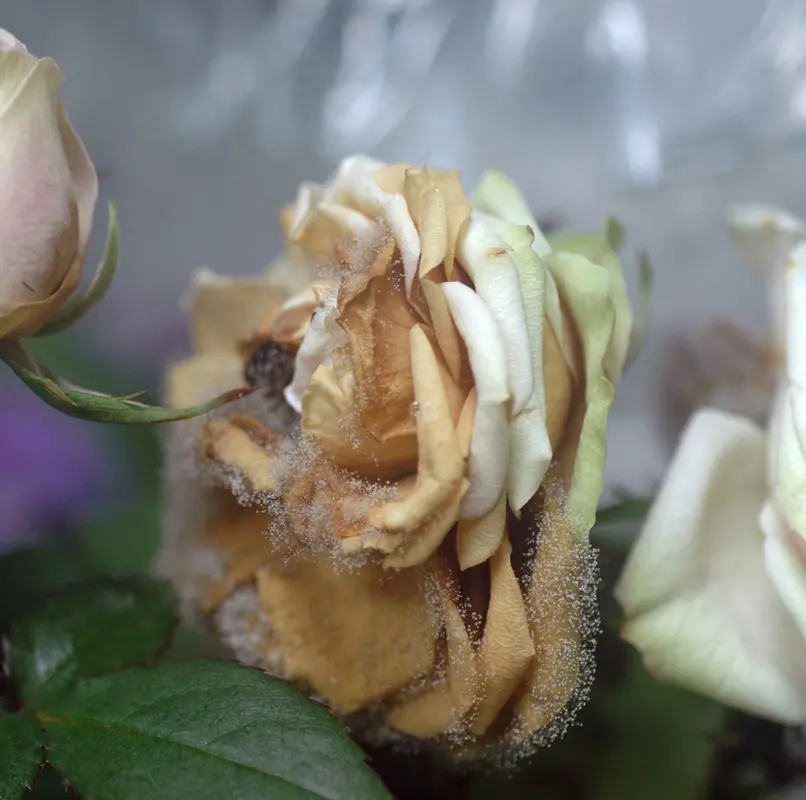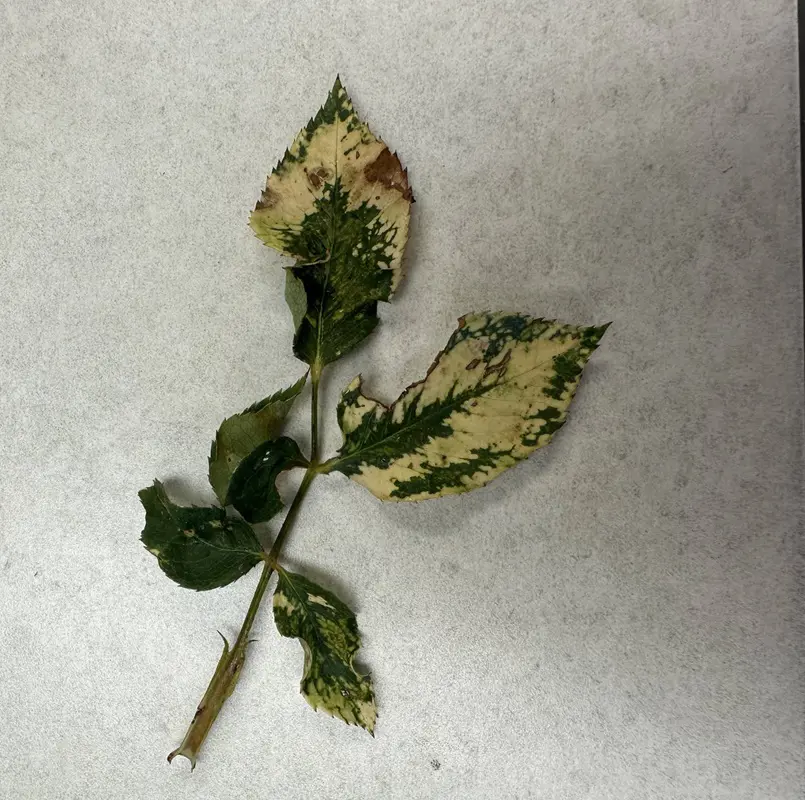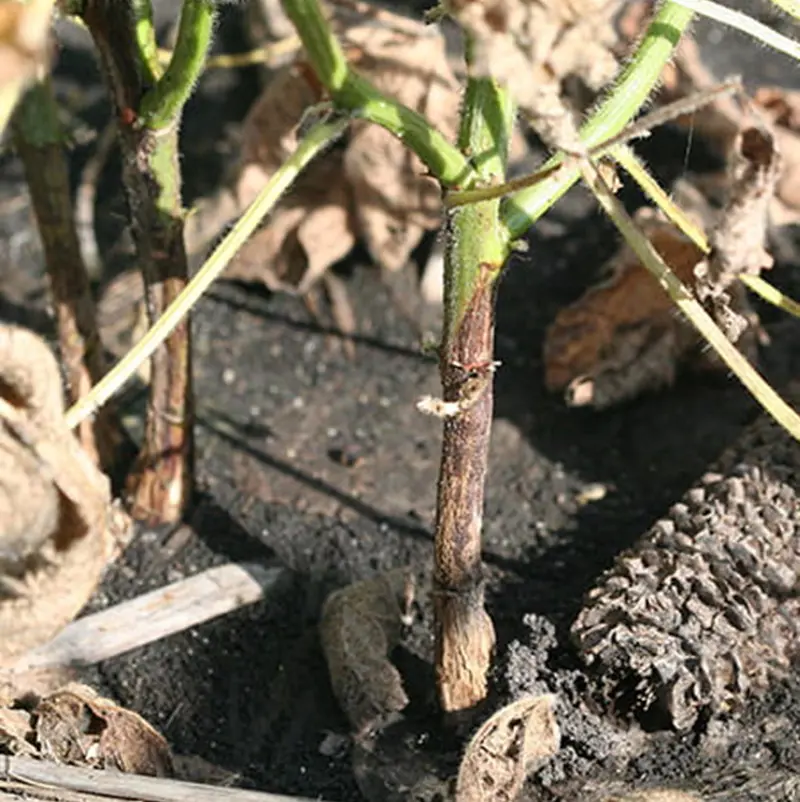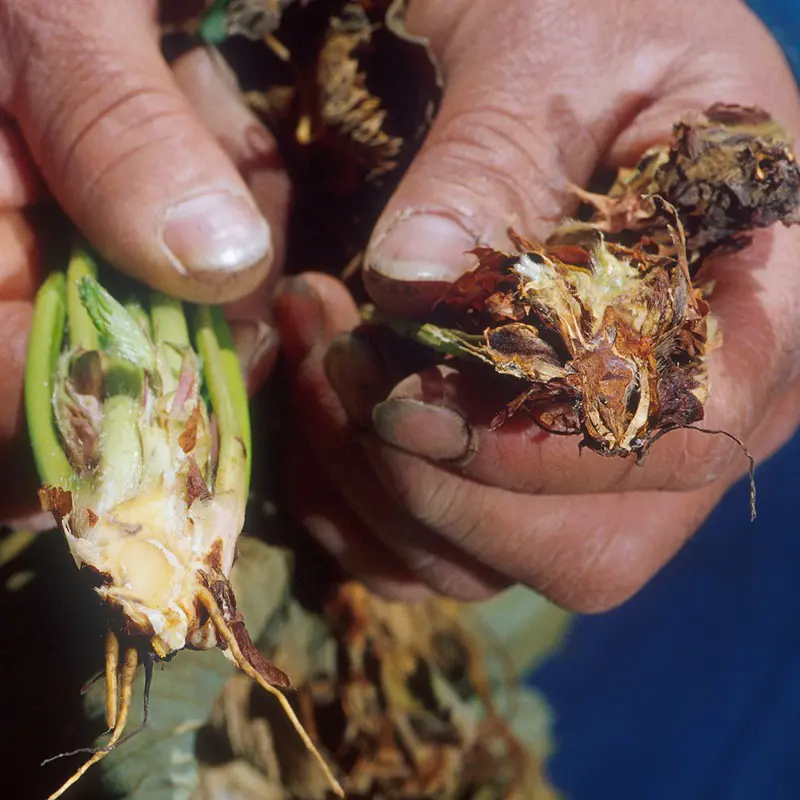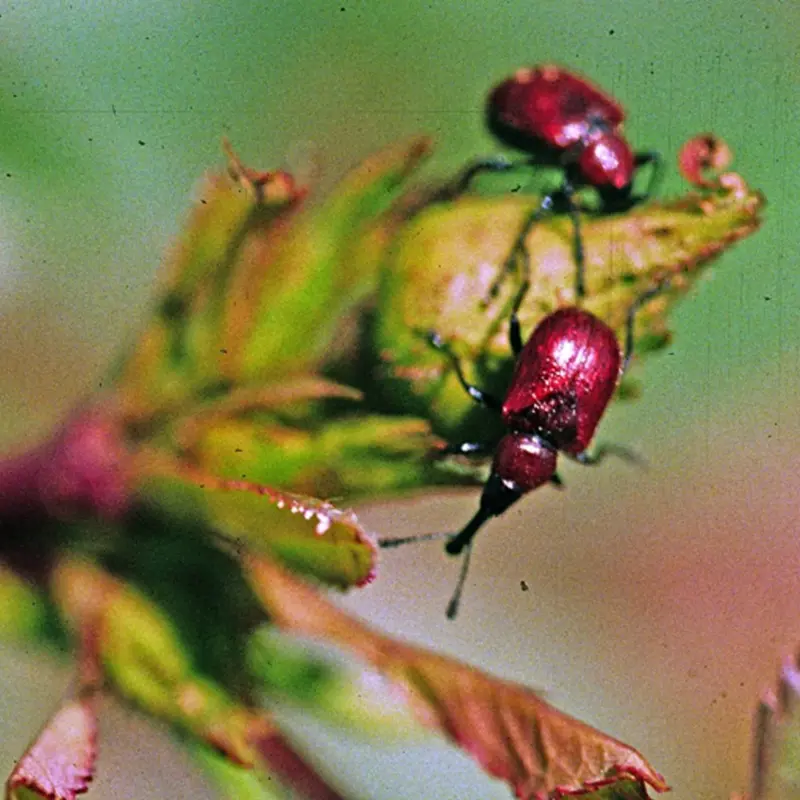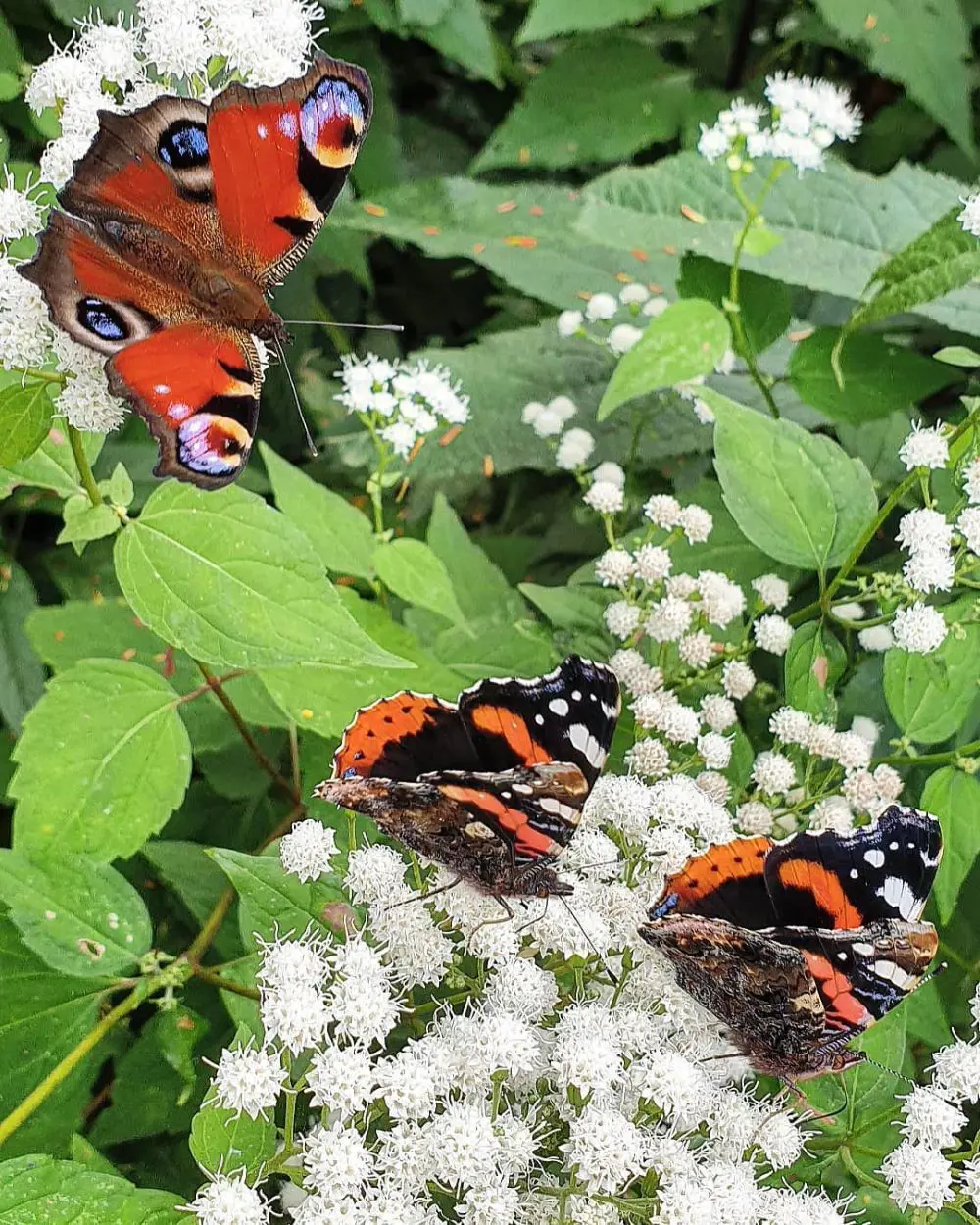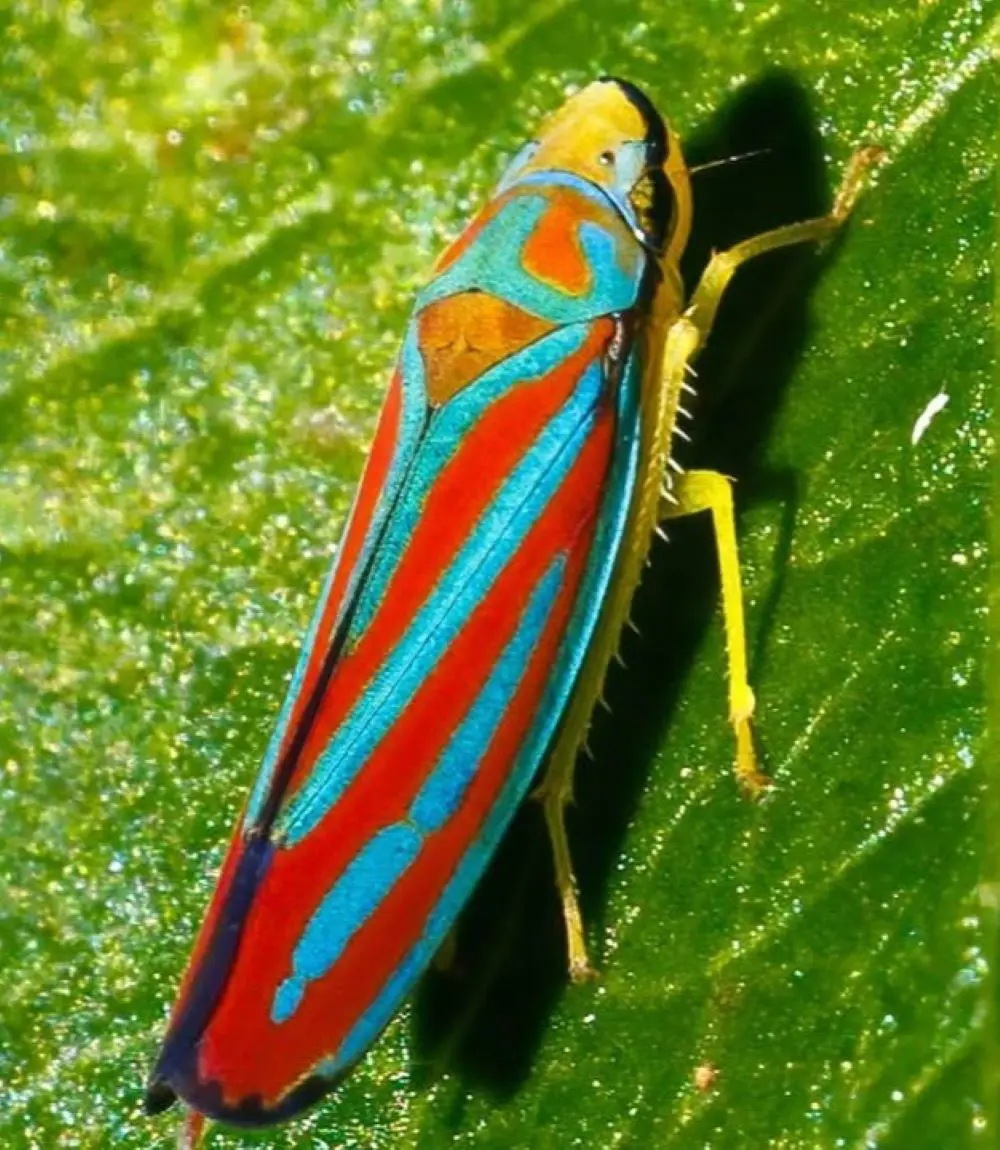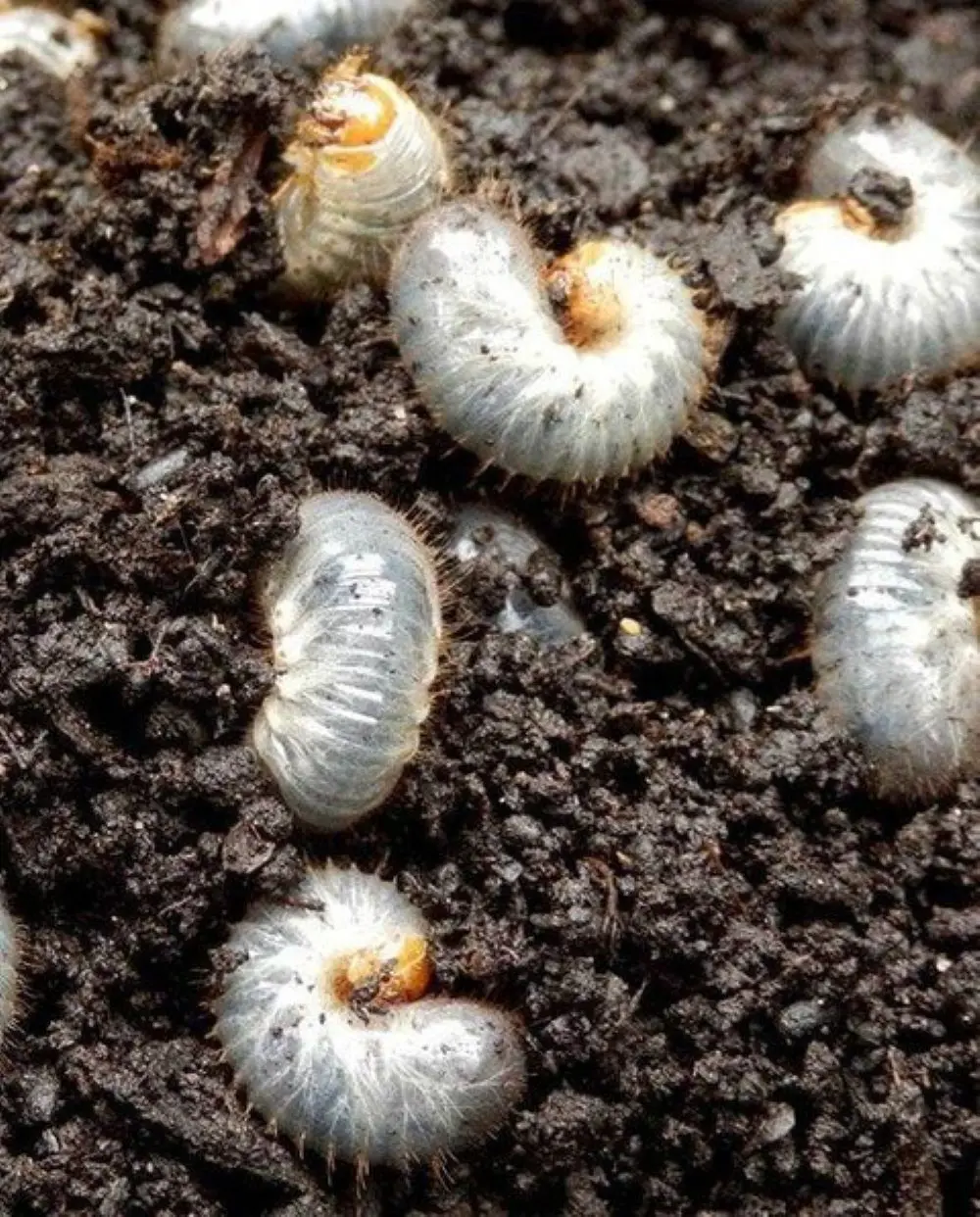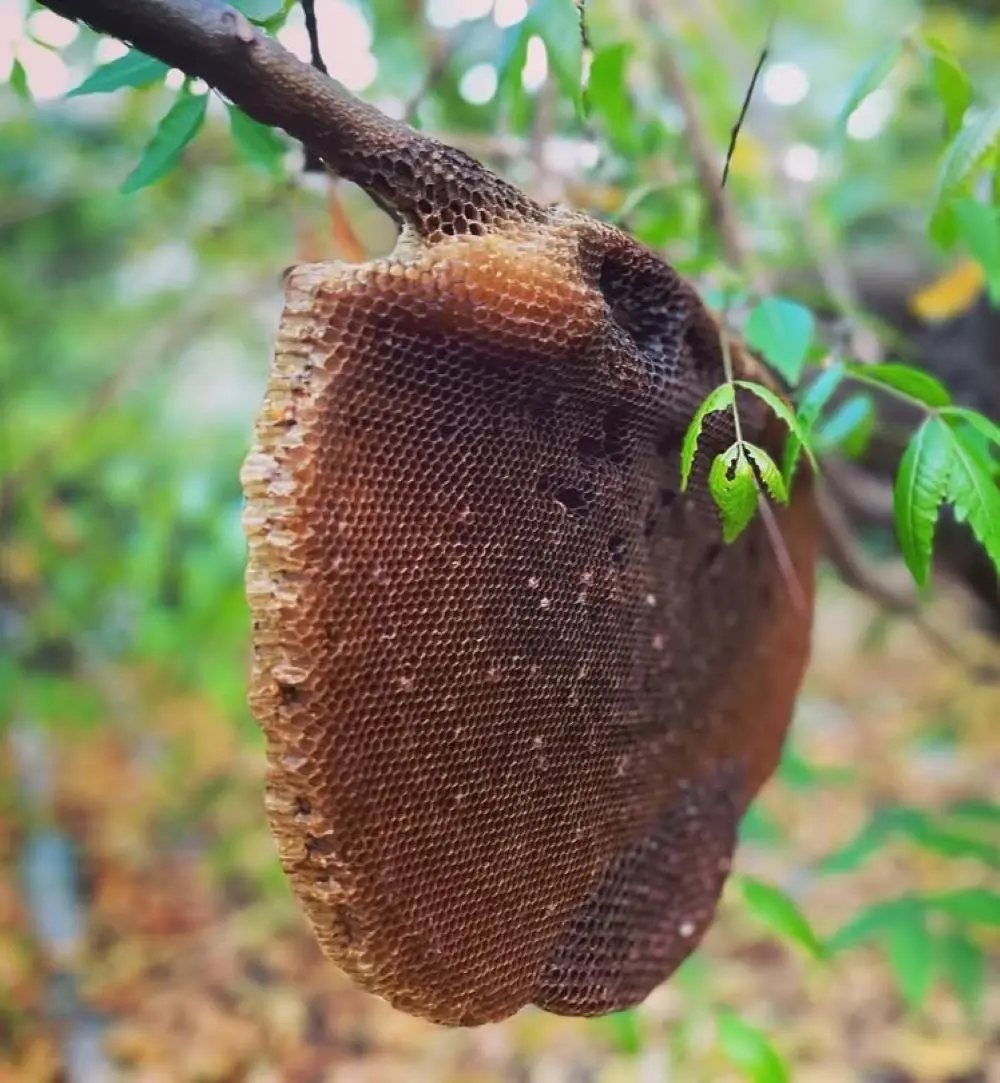1. Black Spot
How To Identify
The black spot is probably the most common and injurious of all rose diseases. It is characterized by circular black spots, with fringed edges, on the upper surface of leaves. These spots often vary in diameter, running from smaller to fairly larger.
As the infection progresses, many leaves, especially on susceptible cultivars, yellow and drop prematurely. This leaf drop can seriously weaken the plant over time, thereby reducing its general hardiness and flower production. Black spot adores residing in a warm, moist environment. If left untreated, it will heavily damage your rose plants.
How to Treat
The first thing to do to treat black spots is to remove and discard any infected leaves and canes. Watering should be avoided overhead to minimize the amount of moisture on the leaves because this encourages the disease to spread.
Apply a fungicide labeled for black spot control, following the directions of the manufacturer carefully. For organic gardeners, neem oil or a homemade spray of baking soda and water can be an effective treatment. Good air circulation, provided by routine pruning of your roses, can help to inhibit the disease.

